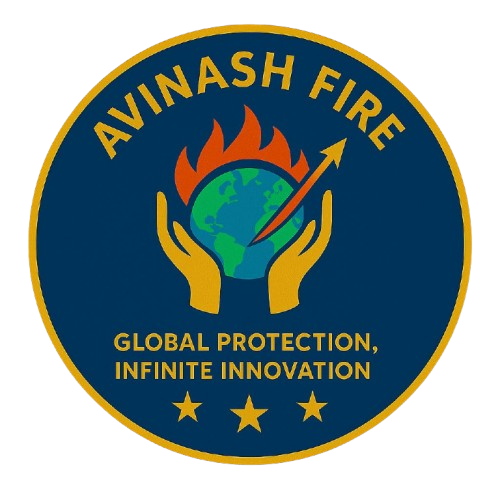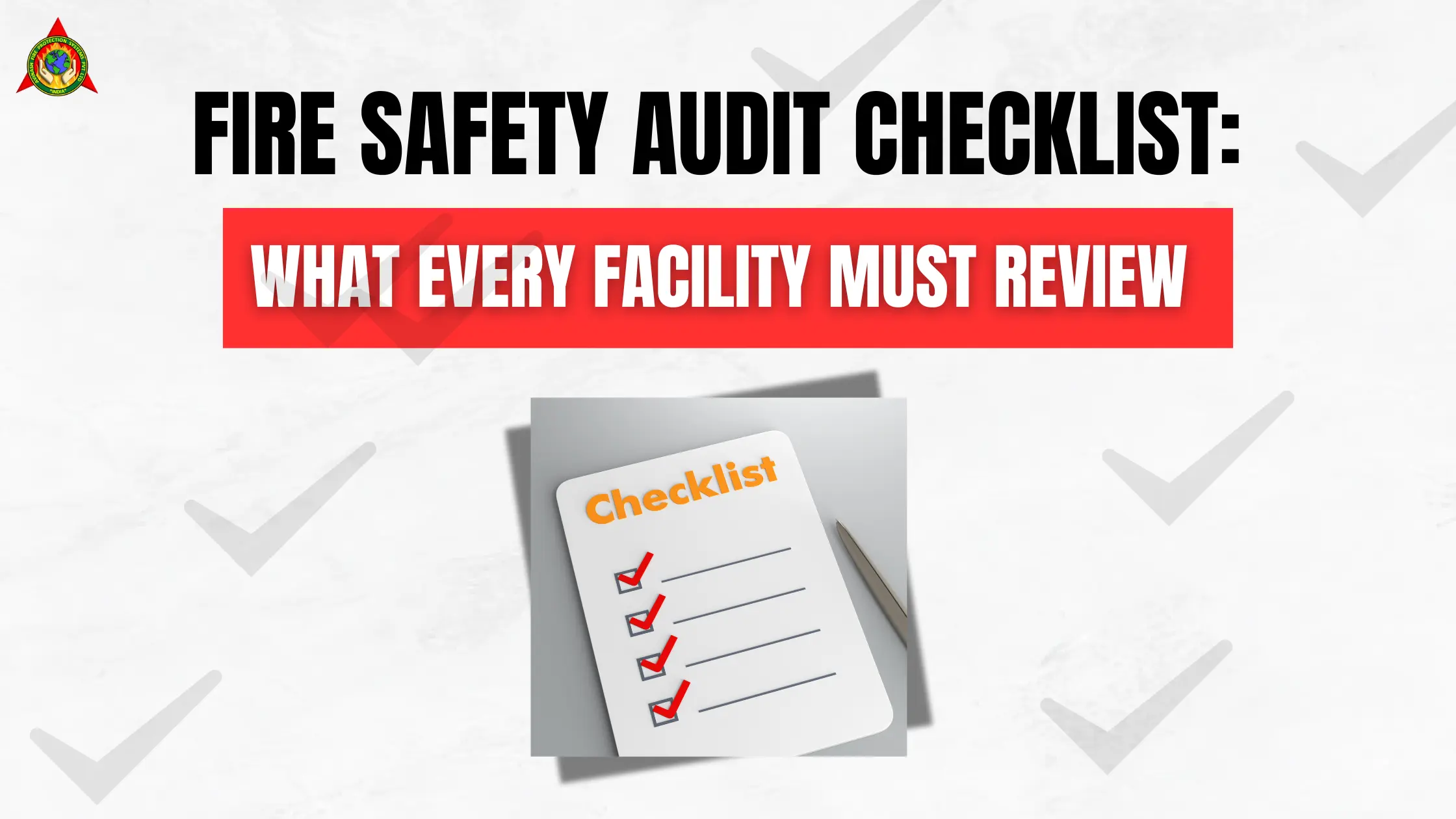A fire safety audit checklist is a long checklist one needs to make sure that his facility is ready to meet the fire risks and meet the regulatory requirements and safeguard buildings lives and properties. In this paper, the author will identify the key areas that any company should research- extinguishers, alarms, training, emergency exits, and industry related to the specifications. This checklist will enable you to tighten your fire safety approach with confidence whether you are dealing in a school, hotel, office, factory or any other type of complex.
Introduction
Compliance with government regulations is not the only purpose of fire safety since the main aim is to save lives, reduce the extent of damages, and ensure continuity of operations. A wire that has been left hanging, an exit that is blocked or a fire extinguisher that is out of date may be all it takes to transform a simple spark into a whole-scale disaster. This is the reason why each facility should have a properly designed fire safety audit checklist that should be relevant to that particular setting.
You are at the right place in case you are asking yourself where to begin or whether your existing safety measures are late or not. In this guide, we are going to see the main elements that any organization should examine in case of an audit conducted on fire safety and how such a system can be established to safeguard both people life and property.
What Should Be Included in Your Fire Safety Audit Checklist?
A thorough fire and safety audit checklist is more than a tick-box activity—it’s a life-saving framework. Here’s what it must include:
1. Fire Extinguishers & Suppression Equipment
- Are your fire extinguishers in the right conditions to service you at the most needed time?
- Do they have good mount and are they visible?
- Are they in accord with the levels of fire risks at the area (Class A, B, C, etc.)?
- Were they serviced during the previous 12 months?
- Are all systems of suppression (sprinklers, gas systems) checked and in action?
Places of work, such as factory or workshop must consult an industrial fire safety checklist to provide increased attention areas of maximum risks which include fuel stores, boilers and welding areas..
2. Are Your Emergency Exits Safe and Accessible?
The first response to a fire is evacuation. To be sure that your fire safety checklist will uncover any hazards related to fire, you must be sure that:
- Exit doors have bright signs which are functional.
- There are no obstructions in escape routes
- The exit doors exit opening out and can easily be unlocked
- The floor plans and emergency instructions are apparent to all occupants
One thing that is NOT a negotiable practice whether in a hotel fire safety checklist or a school fire safety checklist is the evacuation practice. Visitors, workers, or scholars ought to be able to evacuate without confusion or time wastage.
3. Fire Alarms, Smoke Detectors & Communication Systems
Prevention is life. Test of your fire detection systems should be undertaken regularly and this includes:
- Manual call points (Pull stations)
- Smoke and heat sensor
- Functionality of alarm panels
Automated messaging systems which guide the inhabitants during emergencies should also be included in your fire safety inspection checklist in case of facilities larger in size.
4. Electrical Systems and Wiring
Poor electrical equipment causes the origin of many fires at workplaces. Ensure that:
- No open wires are seen
- Breakers and fuse boxes are tagged and sealed up
- They have been PAT-tested on all appliances ( where required )
- Daisy-chained power strips and overloaded circuits are goneIt may be difficult to do away with overloaded circuits and daisy-chained power strips. Besides, overloaded circuits may be hard to eliminate, and so is the daisy-chained power strips.
The fire safety audit checklist of which should also be used on the industry in the case of manufacturing to make sure that in the case of fire, equipment shutdown processes are followed.
5. Fire Drills and Staff Training
It cannot help to have a plan unless people know how to go by it. Confirm:
- Fire drills are undertaken at least twice every year
- Recognize locations to assemble (assembly points)
- First responders and fire wardens get training
- Personnel know the use of fire extinguishers and alarms
As an example, school fire safety checklist must contain age-dependent drills and instructions to whom teachers must follow throughout the evacuation.
6. Flammable Materials and Hazardous Waste Management
Are there chemicals labeled and stored in the proper way?
- Is MSDS available?
- Are hazardous wastes discarded as per the law?
- Are inflammable liquids stored in cabinets approved?
This is more so important in labs, or facilities dealing with fuels, and oils, and cleaning agents. The local regulatory compliance in terms of hazardous storage should be incorporated in the fire and safety check list..
7. Fire Life Safety Systems and Building Infrastructure
The following should be evaluated in your fire life safety systems checklist:
- Doors, damper, and fire-rated walls
- Openings through walls and ceilings Fire stop
- Ambulance illumination The E strip, emergency lights and lit signs
- Emergency safety systems battery backups
These systems are not established sometimes yet they are very crucial in trapping fire and giving evacuation ways
8. Housekeeping and Clutter Control
Are there no clutters in fire exist places and electrical panels?
- Are flammable objects (paper, cloth, cardboard) locked in a place that does not expose them to heat?
- Does it have a regular cleaning program to get rid of dust and clutter?
Unproductive cleaning may speed up the fire. This is a very simple part of your fire safety audit checklist that can avert unwarranted risk.
9. Documentation and Legal Compliance
Document inspection, tests and training Keeping up to date records of inspection, tests and training
- Make sure that the fire safety checklist supports the local fire codes
- Check up insurance requirements and liability policies
- Record on incidents reports and improvement activities
To ensure that they are continuously in compliance, auditors usually demand the previous records. Documents will be your evidence that fire safety is not an option: it is a part of the culture of your facility.
Wrapping It Up: Is Your Facility Fire-Ready?
The fact that you have a fire safety audit checklist is not necessarily because it is the standard of inspection; it is because you care about your other seconds. Regardless of whether you are operating a warehouse, hotel, office building, or a school, the system that you are installing should take care of all the risk zones.
It is a matter of checking the functionality of your extinguishers all the way to making sure your staff is aware of what to do. Make your fire and safety audit checklist customised to the design, occupancy type and risk of fire to your building. And what when you feel it all too much? Fire safety companies such as Avinash Fire are capable of providing you with professional audits and supplying equipment that is compliant..
Final Thoughts
Don’t wait for a fire to test your preparedness. Start with a detailed fire safety inspection checklist, get your team involved, and commit to routine audits. Whether you’re building a hotel fire safety checklist, a school fire safety checklist, or an industrial fire safety checklist, having a complete plan in place is the smartest way to save lives and reduce risk.


